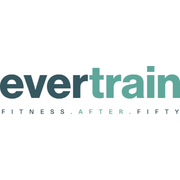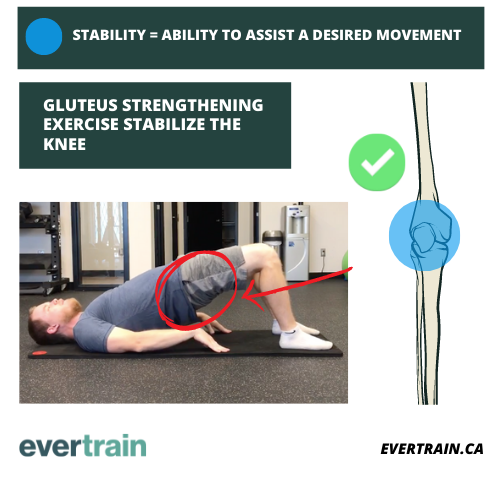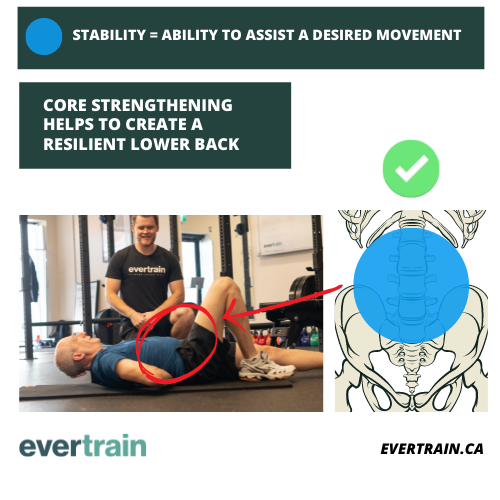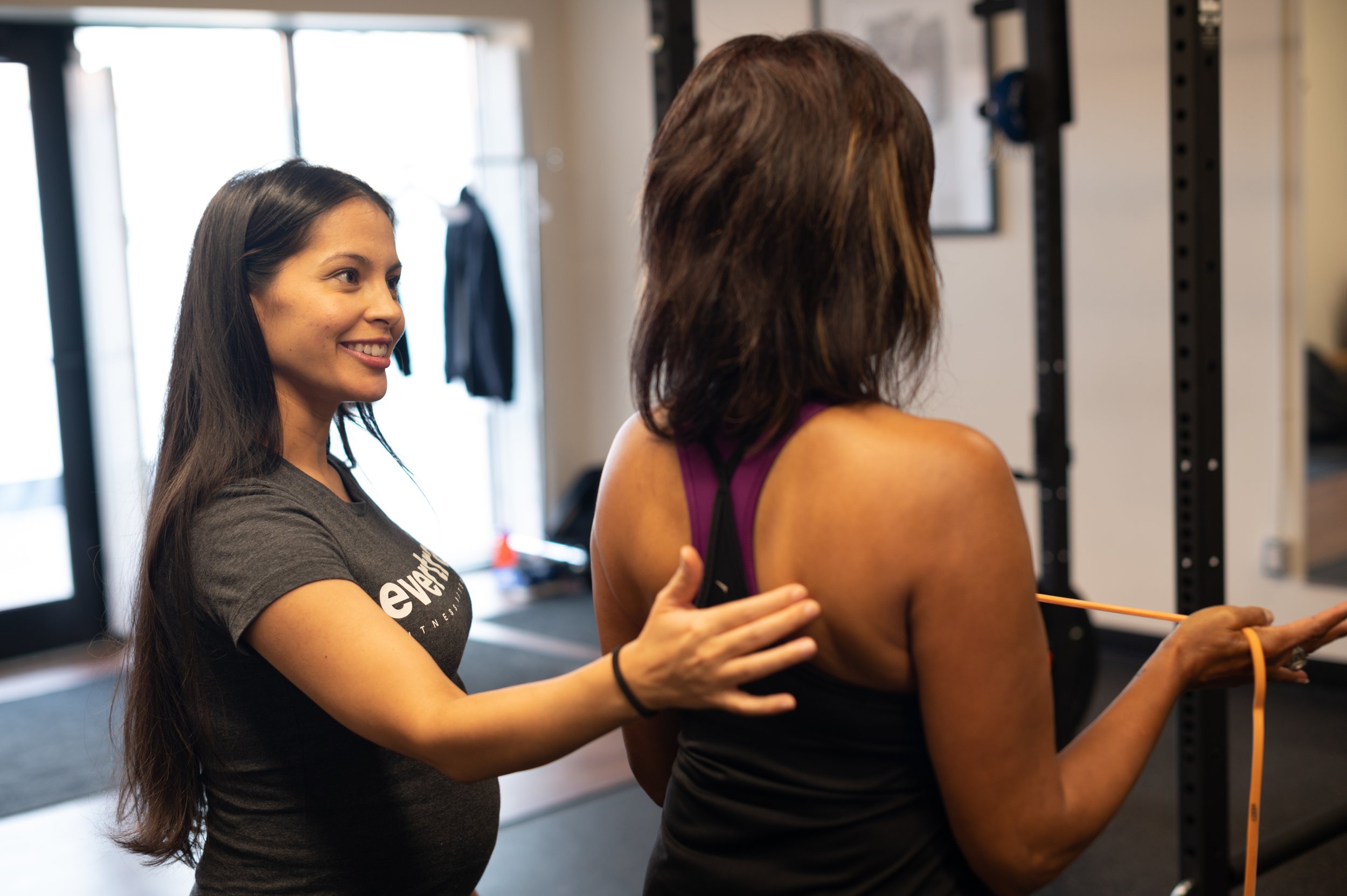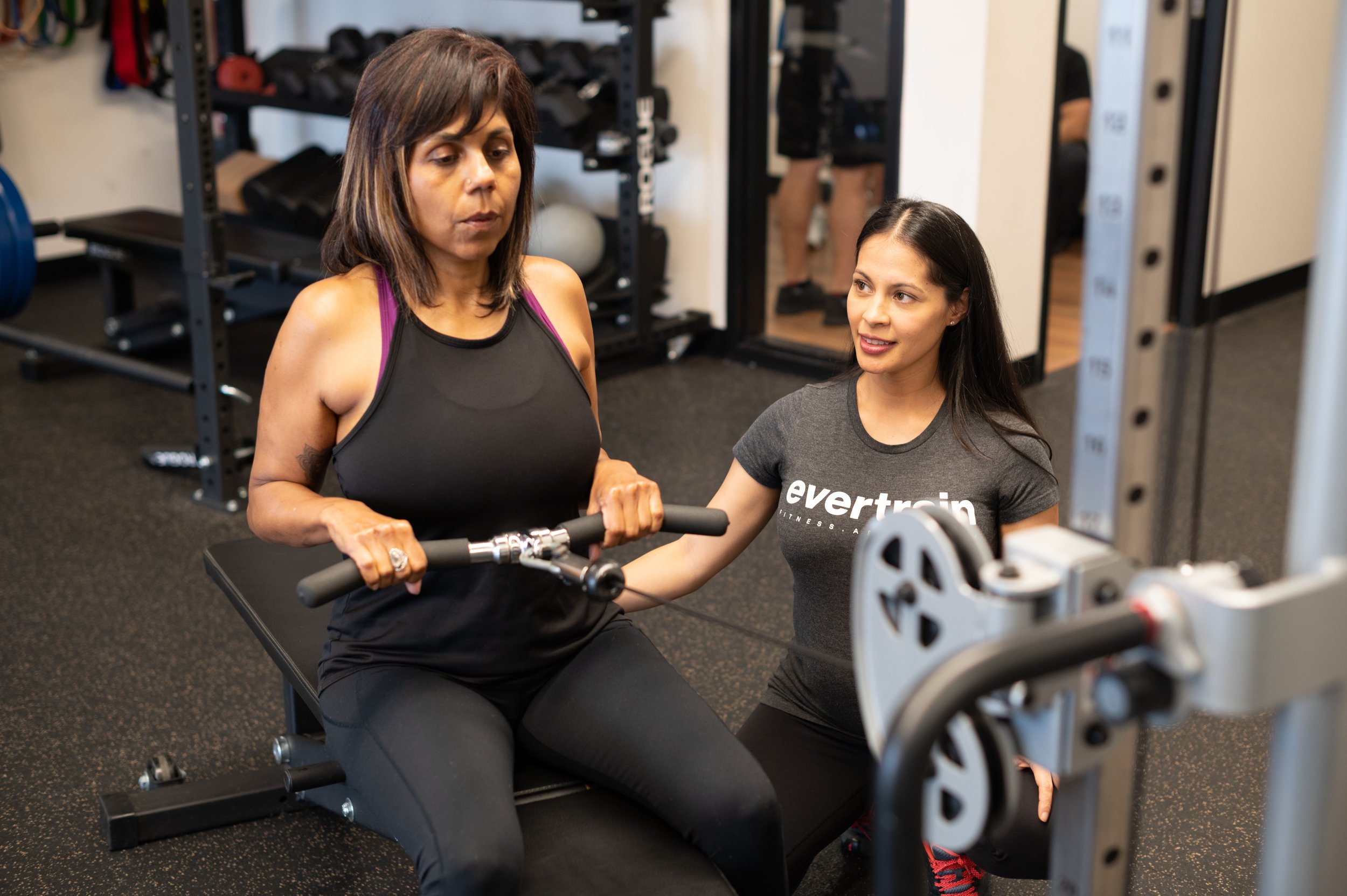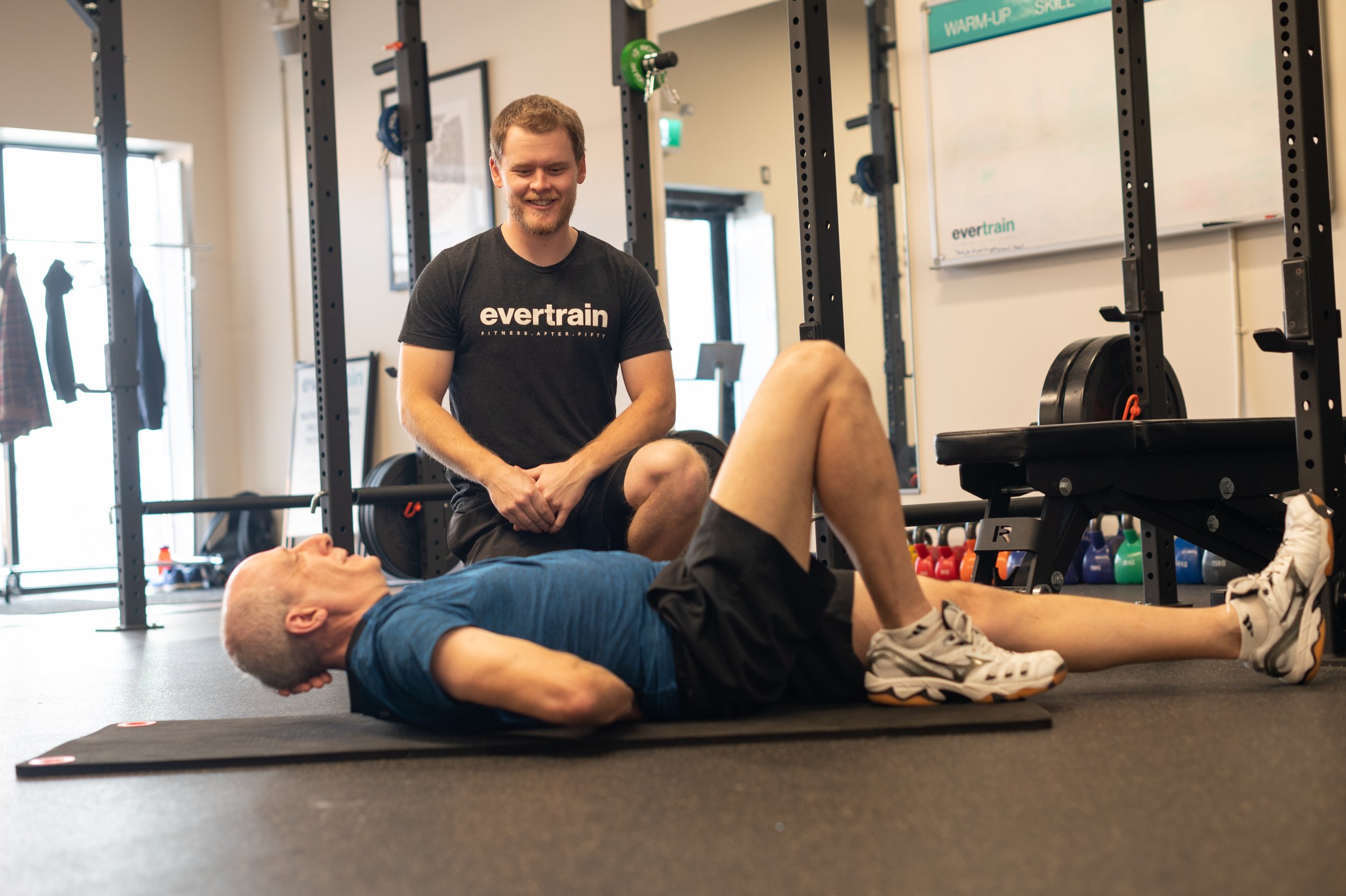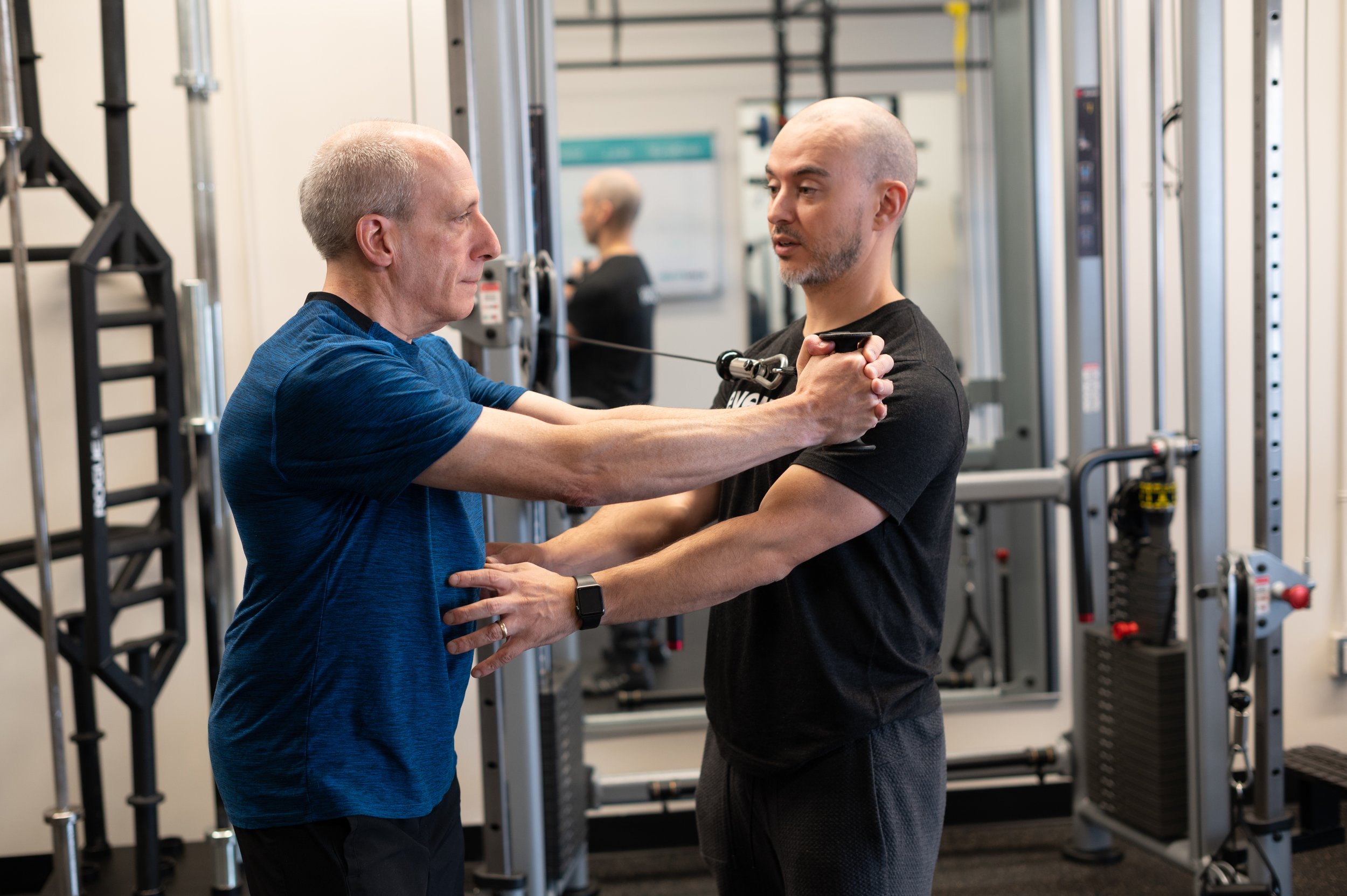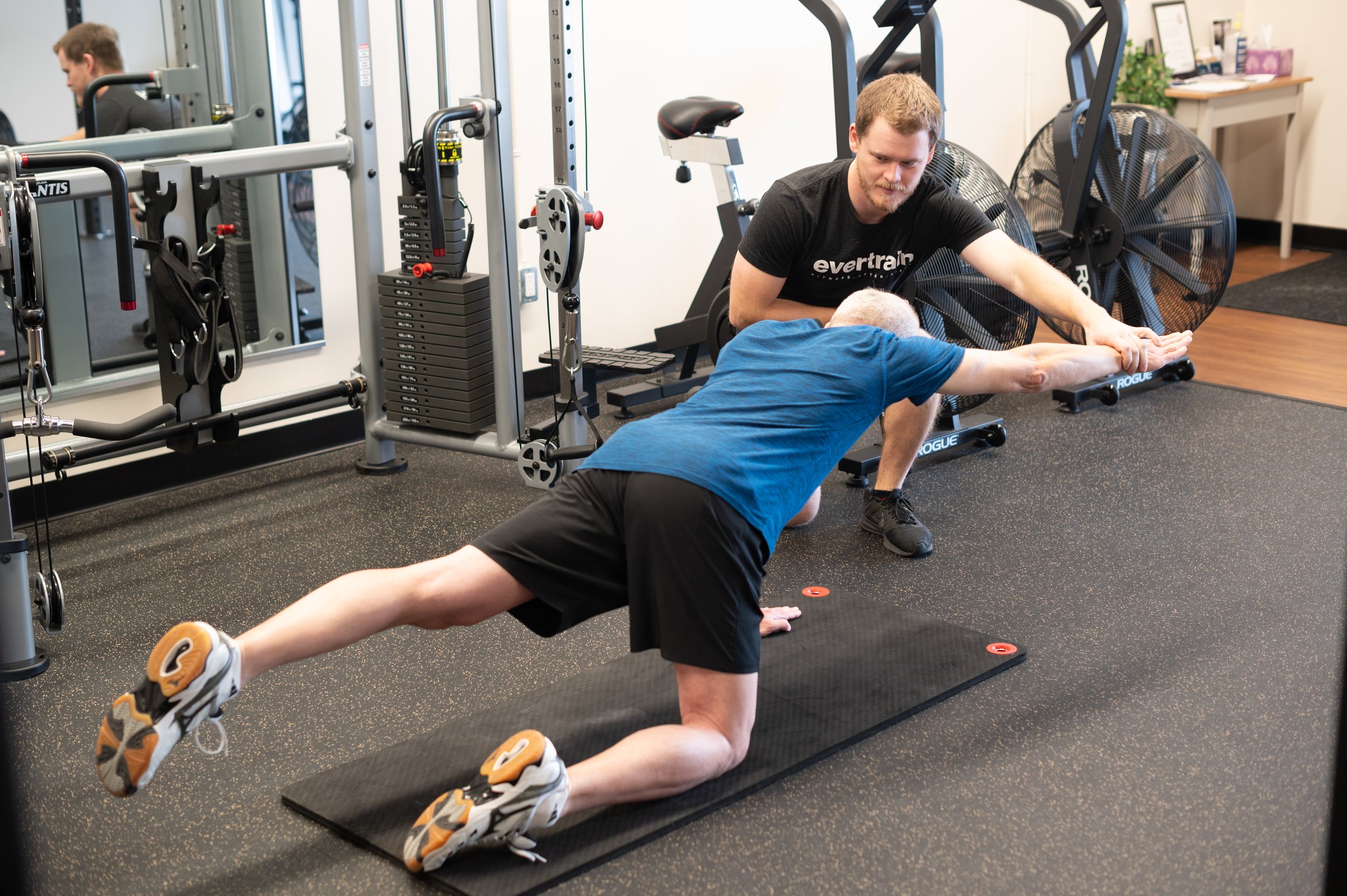These are the 4 best practices that we use as online personal trainers for people over 50. 💪
Everyone over 50 should be training these 3 muscle groups. Here’s why.
~6 minute read
The Big 3 💪
Over the years, as the body weakens and posture worsens, the need to fortify the "big 3" becomes greater. To be successful you must centre your training regimen around these key areas.
The upper back, “glutes” and core muscles are incredibly important to train regularly. At Evertrain, all of our clients get a heavy dose of work on these muscle groups at every workout.
In 50+ people, these areas are universally the weakest regions. If they go unaddressed problems ensue.
We also train other areas, but the big 3 always remain top priority. Doing this will significantly fast track results all while reducing your risk of injury. 🚀📈
Here are some examples of “Big 3” exercises in the images seen below.
Upper Back
A strong upper back is important in keeping good posture in the upper body. The back muscles are what pull the shoulders back and into place.
By having a strong upper back, it becomes easier to hold this position which helps prevent shoulder and neck injuries from occurring later on.
The upper back can be broken down into 3 key regions.
Latissimus Dorsi: Connects the shoulders to the hips and is one of the largest muscles in the body. Important for total body strength and shoulder stability.
Trapezius & Rhomboids:: Stabilize the shoulder blades and upper spine. Improve posture which affects neck and shoulder pain. Crucial for relief of shoulder and neck pain and upper body strength.
External rotators: Key stabilizers of the shoulder joint. Part of the rotator cuff (a group of 4 muscles that stabilize the ball and socket joint of the shoulder) which is a common place for injury to occur (especially in older women and smokers).
Glute Complex
When we spend a lot of time sitting (i.e. working from home), our glutes tend to become weak and our hip flexors (front of the hip) build up excess tension.
When this occurs, low back pain, hip injuries and knee pain can arise. This inhibits our ability to perform basic activities. This is largely caused by a WEAK GLUTE COMPLEX.
A STRONG GLUTE COMPLEX acts to reduce or eliminate low back pain, hip, and knee pain and builds lower body strength to improve our every day activities (i.e. stairs, getting out of seated position, sports we love).
The glute complex is made up of 3 main muscles. 👇
Gluteus Minimus: Helps with stabilizing the hips during walking, running and single leg standing.
Gluteus Medius: Primary hip abductor (leg moving away from the body) and also crucial for side-to-side stability of the pelvis during movement and single leg stability.
Gluteus Maximus: One of the strongest muscles in the body. Along with many other functions, it is the primary mover for hip extension (forward movement).
Core
The most important function of the core muscles are to help stabilize the body during movement and brace the midsection to prevent over-exertion of the spine/discs.
The core is designed to RESIST movement, NOT create it.
Core exercises that cause movement (i.e. classic sit-ups and crunches) are notorious for actually causing lower back pain.
When dealing with a 50+ body, we can't afford to be causing injury so here at Evertrain, we focus on anti-movement core exercises to reduce the impact on the lower back.
The core muscles can also be broken into 3 main regions.
Rectus Abdominus: Tenses the abdominal wall. Controls the movement of the trunk and pelvis. Plays a large role in the curvature of the spine.
Transverse Abdominus: One of the main core stabilizing muscles of the lumbar spine. Very important to be strong in this area.
Internal/External Obliques: Ties the upper and lower body together. Controls rotation and side flexion of the trunk relative to the lower body.
Recap
For the person over 50, the 3 most important muscle groups to improve posture and prevent injury are:
Upper back for improved posture/shoulder stability/reduced pain
Glutes to improve lower back, knee and hip stability and reduce lower back/hip/knee pain
Core to stabilize the body and prevent low back pain
Whether you’re an avid exerciser or a true beginner, training these 3 exercises is a must. In fact, no matter how advanced and far from pain our clients become, we never abandon this key principle when designing fitness programs. Without constantly training the big 3, these muscles will atrophy and weaken.
This one tip alone is a big part of our “secret sauce” here at Evertrain. If you want help implementing a fitness program that includes the big 3 so you can get unstuck, get back in shape and get rid of the aches and pains, schedule a call with us TODAY. 🙂👇
Thanks for reading!
Brandon - Online Personal Training Expert, Neuroscience and Mental Health graduate and Triathlete
